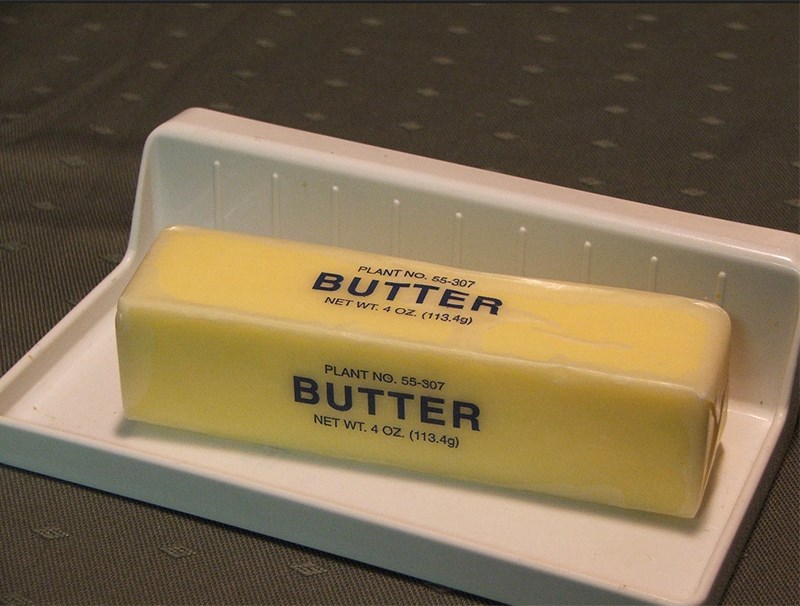When it comes to cooking, baking and mealtime, butter has a definite role in the kitchen and at the dinner table.
And yes, I know that even mentioning the comparison of butter to margarine is going to stir up a lot of opinions. I can’t even remember the last time margarine made its way into my refrigerator.
Nothing is better for flavour, richness, meltability, texture and - in moderation - health benefits.Â
Butter is one of the oldest and most natural products there is, yet it has taken quite a beating from margarines. Many people buy margarine due to budgetary restrictions, but I would assume that there are just as many, if not more, who purchase it because of perceived health benefits.
Not all margarines are created equal and it is important to read the labels of any product that is manufactured and/or processed, including butter.Â
If one is purchasing margarine, one of the main things to look out for in an ingredient list is “hydrogenated” or “modified” oil. Hydrogenation is the process used to transform liquid oil into a solid fat at room temperature. Vegetable shortening, many peanut butters and various margarines are made in this manner and this process creates artificially produced trans fats which are now considered the worst type of fat for the heart.
Butter is not processed using hydrogenation. In fact, butter is hardly processed at all. What butter does have is a very small amount of naturally occurring trans fat, also present in the meat of animals such as beef and lamb.Â
A 1994 Harvard University study, as well as research from other credible sources, have concluded that a diet high in trans fats doubles the chance for heart attack and decreases life expectancy. While trans fats can occur naturally, they are most commonly associated with chemical preservative techniques like hydrogenation and health experts recommend that you limit your intake of hydrogenated or partially-hydrogenated foodstuffs as much as possible.Â
It is also important to point out that a two-teaspoon serving of butter usually has no more calories or fat than margarine or olive oil.
So are butter, margarine, and vegetable oils bad for you? First of all, let’s point out that the term “bad” is not definitive. It depends on what you are looking for and it is imperative to keep in mind that there are pros and cons for everything. Let’s face it - no matter what type of fat you are ingesting on a regular basis, moderation is the key, as with almost everything. For instance, many doctors may tell you that red wine is good for you, but always in moderation: One glass per day may be fine but skipping the whole week and having seven glasses on Friday night, not so much.
No matter how you look at it, nothing can replace the flavour and mouth feel of butter, and also the texture created by using it in baked goods.
Dear Chef Dez:
Some recipes call for unsalted butter and also call for salt. Can you please explain why?
Vivian D.
Surrey
Dear Vivian:
Usually one will often see this by pastry chefs wanting to control the amount of salt in their pastry, which is usually less than the percentage found in the butter.
Unless making very precise recipes, there is no need to use unsalted butter and I have always used salted butter for everything. It is less expensive than unsalted butter and isn’t butter expensive enough already?
Chef Dez is a Chef, Writer, & Host. Visit him atÂ



